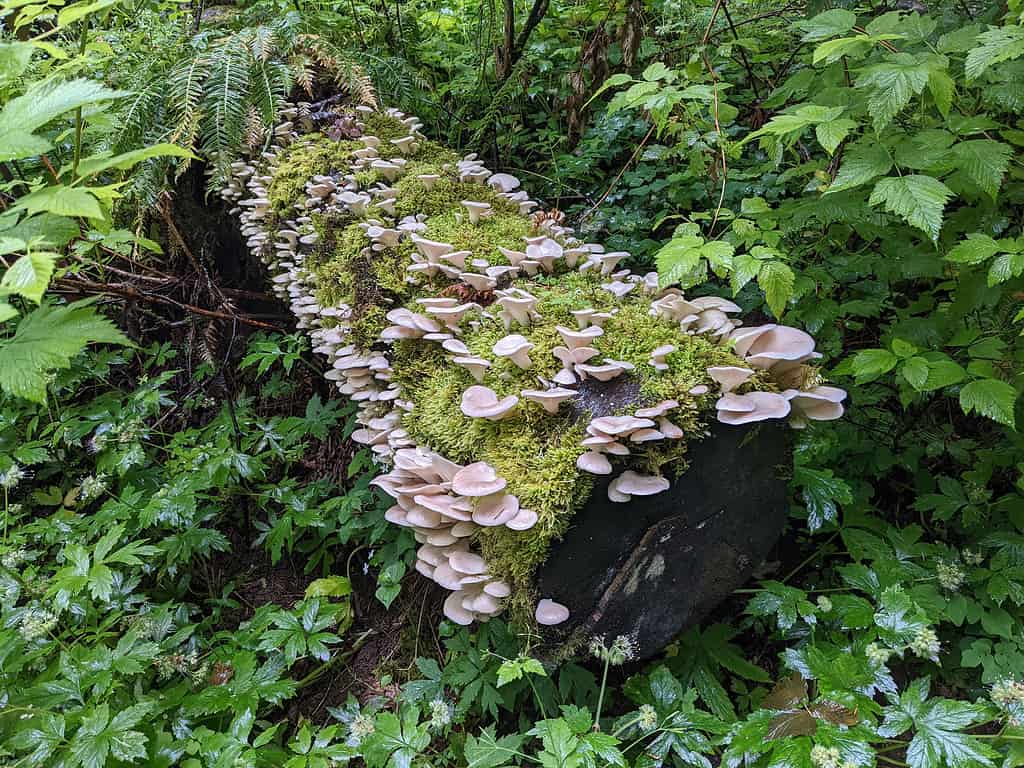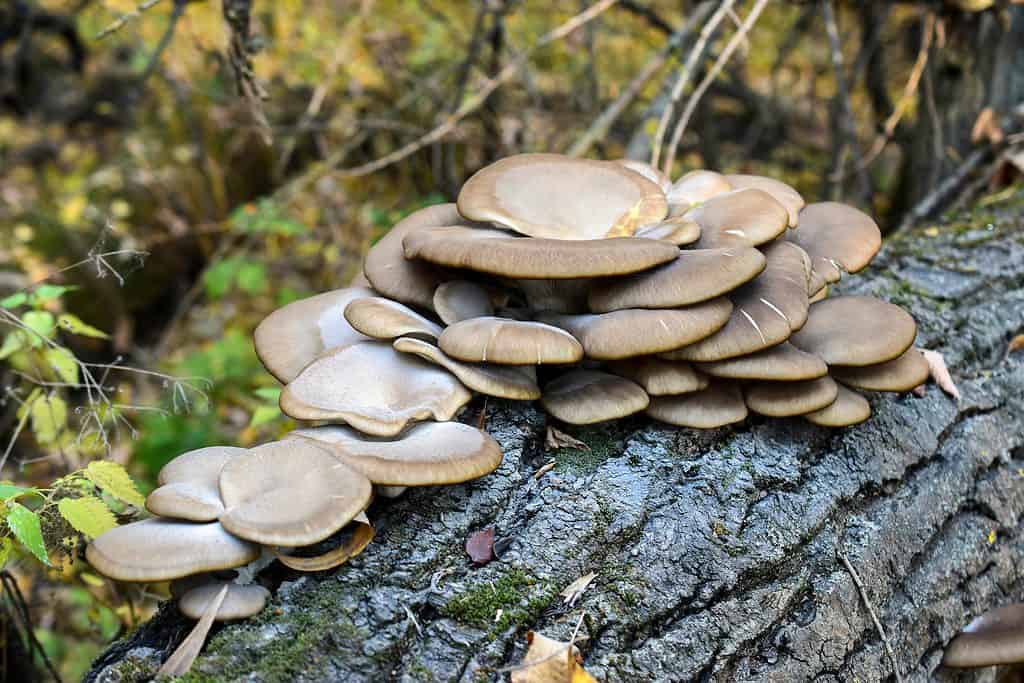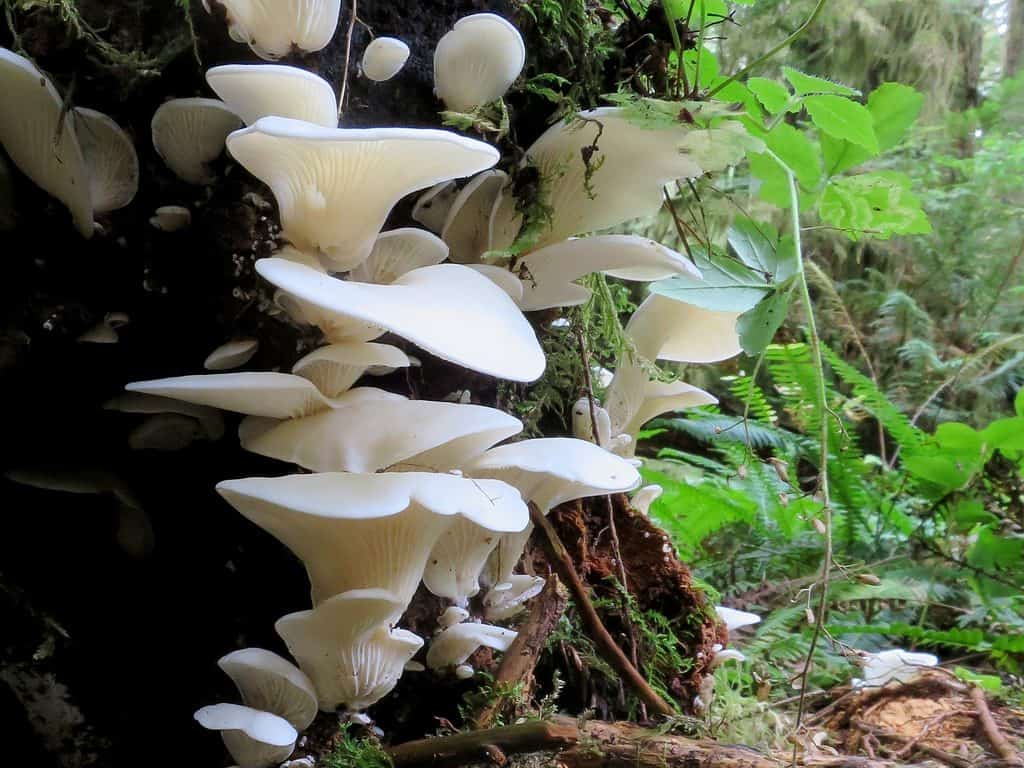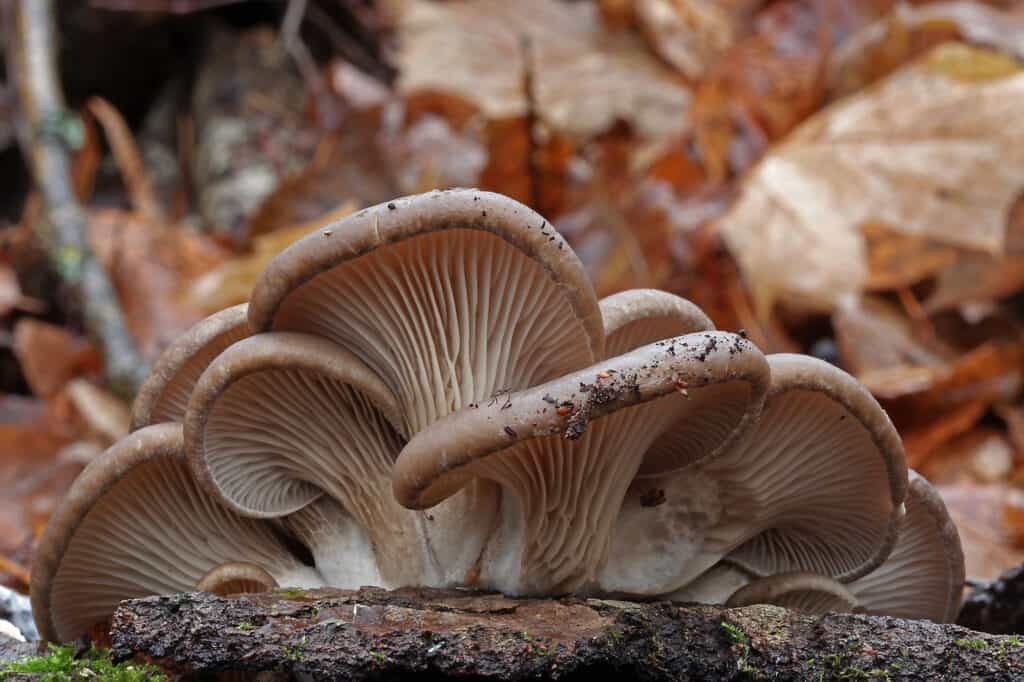Oyster mushrooms are a widely foraged and cultivated genus of mushrooms. If you’re interested in mushroom hunting, familiarizing yourself with oysters can provide an opportunity for widespread and almost year-round foraging in temperate forests.
In this guide, we’ll discuss how to find oyster mushrooms, their fungal classification, and the importance of informed foraging with an understanding of how to identify toxic regional lookalikes.
Read on to learn more!
How to Find Oyster Mushrooms: Preparing to Forage
It’s crucial to prepare for a mushroom foraging trip properly. If you’re a beginner mushroom hunter, you should attend forays with mushroom clubs or accompany a mushroom expert. Reputable online groups, dichotomous keys, and modern, updated field guides can help you with identification. If you’re foraging alone as a beginner, you can also send samples to a lab for identification. Oyster mushrooms do have toxic lookalikes (more on this later) and aren’t the most beginner-friendly genus of mushrooms to hunt for. The bottom line here is never to consume wild mushrooms that you aren’t 100% confident of the edibility status and identification.
What to Bring
On a mushroom hunting outing, especially in the forest, it’s a great idea to wear sturdy, closed-toed shoes and long pants that you may want to tuck into your socks, depending on the tick population. If you’re going to be headed into the forest for a few hours, it’s prudent to bring water and snacks.
When foraging, bring along a mesh bag or woven basket. These containers will allow the spores to spread throughout the forest as you walk. The open ventilation will also help keep your mushrooms fresh.
If you’re especially interested in building your identification skills, it’s best to bring along the following items:
- A notebook and pencil
- An updated, modern mushroom field guide relevant to your region
- A camera, ideally with a high-quality focus
- A magnifying glass
- A pocket knife
- A small, soft-bristled brush
Taking detailed notes during your foraging trip will help increase your identification skills and allow you to notice patterns of where and when certain species are fruiting. Take note of the time of year, species or general classification of the tree the oysters are fruiting on, and details of the microclimate.

Taking detailed notes of where you find oyster mushrooms will increase your identification skills and expand your knowledge for future mushroom hunting trips.
©Kay Dropiewski/iStock via Getty Images
Introduction to Oyster Mushrooms
Before we jump into how to find oyster mushrooms, we’ll cover their classification within the kingdom of Fungi and broad identification characteristics.
Oyster mushrooms belong to the genus Pleurotus in the Pleurotaceae family. Dozens of species exist across the world in this genus, with estimates ranging from 40 to over 200. The majority of species inhabit temperate arboreal environments, although some also grow natively in tropical and subtropical climates.
While oyster mushrooms natively occur across regions of all continents except Antarctica, people also widely commercially cultivate them. According to a 2023 report, oyster mushrooms account for about 27% of global edible mushroom cultivation. The common oyster mushroom (Pleurotus ostreatus), golden oysters (Pleurotus citrinopileatus), blue oysters (Pleurotus columbinus), pink oysters (Pleurotus djamour), and king trumpet oysters (Pleurotus eryngii) are the most widely cultivated species.

Oyster mushrooms belong to the
Pleurotusgenus.
©LeManilo/Shutterstock.com
Common Characteristics
Broadly speaking, oyster mushrooms share some common traits across the Pleurotus genus. They are all saprobic, deriving their nutrients from decaying organic matter. Specifically, these mushrooms primarily grow on the deadwood of logs and stumps and typically on deciduous trees. Less commonly, some species grow on the deadwood of conifer trees. Pleurotus pulmonarius is an example of a species that may grow on conifers in the western part of North America. Oyster mushrooms can also be weakly parasitic on the base of live trees, but this is less common.
While there are certainly exceptions to these characterizations, Pleurotus species tend to feature dome, fan, kidney, or oyster-shaped caps, prominent gills that run somewhat down the stipe (aka stem) or rudimentary stipe, firm or rubbery flesh, and off-white to grey or lilac-grey spore prints. Depending on the species, the flesh may be white, cream, grey, light brown, pink, or yellow.
They tend to grow in dense, overlapping clusters in nature. For many commonly occurring North American species, when the mushroom is young, the cap is dome-shaped with in-rolled margins. As the mushroom matures, the cap expands with lateral or uplifted margins, often producing a fan shape. When stripes are present on oyster mushrooms, they tend to be quite prominent and stocky, such as with Pleurotus eryngii. The majority of oyster mushrooms do not feature a partial veil, veil remnants, or a veil ring. A partial veil is a thin, membranous tissue that covers the gills of an immature mushroom. When the mushroom grows and the cap expands, the veil breaks, often leaving remnants on the cap and a ring around the upper portion of the stipe. Pleurotus dryinus, aka the veiled oyster mushroom, is one of the very few or possibly only exceptions in Pleurotus.
How to Find Oyster Mushrooms: Get to Know Toxic Lookalikes
If you’re interested in foraging oyster mushrooms, it’s important to first become familiar with potentially toxic lookalikes in your foraging region that may fruit at the same time as some species of oysters. In North America, one of the most prominent lookalikes with reports of serious poisoning are angel wing mushrooms (Pleurocybella porrigens). The edibility status of Pleurocybella porrigens is a bit complicated and may depend on environmental conditions and region, but they have definitely been implicated in fatal poisonings in Japan.
Overall, angel wings don’t grow as large and feature more vibrantly ivory white coloration than species of off-white to grey-colored oysters, have thinner and more fragile flesh, a more vibrantly white spore pint, and a more vase-shaped morphology with winged margins. Additionally, angel wings tend to grow on conifers, while most Pleurotus species prefer hardwoods.

Angel wing mushrooms (
Pleurocybella porrigens) are an important potentially toxic lookalike to be aware of when foraging oyster mushrooms.
©Randy Bjorklund/Shutterstock.com
How to Find Oyster Mushrooms: Where They Grow in North America
Pleurotus ostreatus, P. populinus, and P. pulmonarius are three species of oyster mushrooms that people commonly forage. They widely occur in temperate regions of North America. To find these oyster mushrooms, you’ll want to look for decaying hardwood logs, stumps, or large branches in moist, forested regions. While you’ll be mostly scanning along the forest floor, remember to also check for trees infected by the mycelium of Pleurotus species.
In North America, wild oyster mushrooms occur commonly across temperate and subtropical forested regions of the continent. If you’re looking for the common oyster mushroom (Pleurotus ostreatus), you can find them growing primarily on hardwood dead logs, especially oaks, poplars, maples, and beech. In northern temperate environments, they can fruit from early fall through spring as this species tends to favor cool and cold-weather conditions.
The aspen oyster mushrooms (Pleurotus populinus) grow in shelf-like clusters in northern and temperate mountainous regions. They fruit exclusively on species of poplar trees and are most prevalent on the quaking aspen (Populus tremuloides). This species fruits from spring through fall.
The lung oyster (Pleurotus pulmonarius) grows in shelf-life clusters on a range of dead and living hardwood species throughout North America. They tend to fruit from late spring through early fall. This species is extremely similar in appearance to Pleurotus ostreatus, although it may fruit more readily on living hardwoods.
You can find the majority of oyster mushroom species in North America growing on dead or living hardwood trees in temperate forests.

You can find the majority of oyster mushroom species in North America growing on dead or living hardwood trees in temperate forests.
©NK-55/Shutterstock.com
The photo featured at the top of this post is © Alison Taylor Photograpy/iStock via Getty Images
The information presented on or through the Website is made available solely for general informational purposes. We do not warrant the accuracy, completeness, or usefulness of this information. Any reliance you place on such information is strictly at your own risk. We disclaim all liability and responsibility arising from any reliance placed on such materials by you or any other visitor to the Website, or by anyone who may be informed of any of its contents. None of the statements or claims on the Website should be taken as medical advice, health advice, or as confirmation that a plant, fungus, or other item is safe for consumption or will provide any health benefits. Anyone considering the health benefits of particular plant, fungus, or other item should first consult with a doctor or other medical professional. The statements made within this Website have not been evaluated by the Food and Drug Administration. These statements are not intended to diagnose, treat, cure or prevent any disease.
Thank you for reading! Have some feedback for us? Contact the AZ Animals editorial team.







